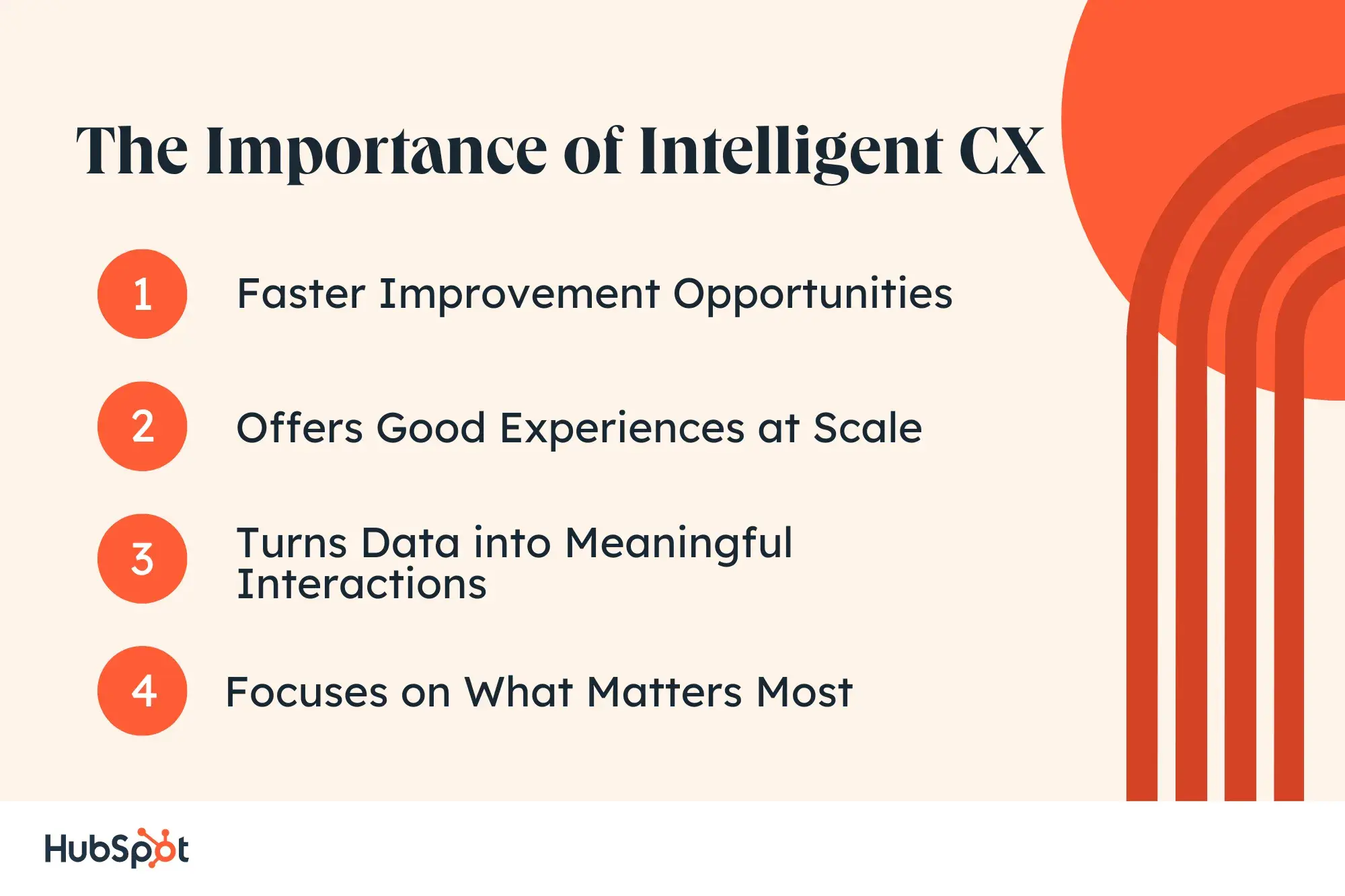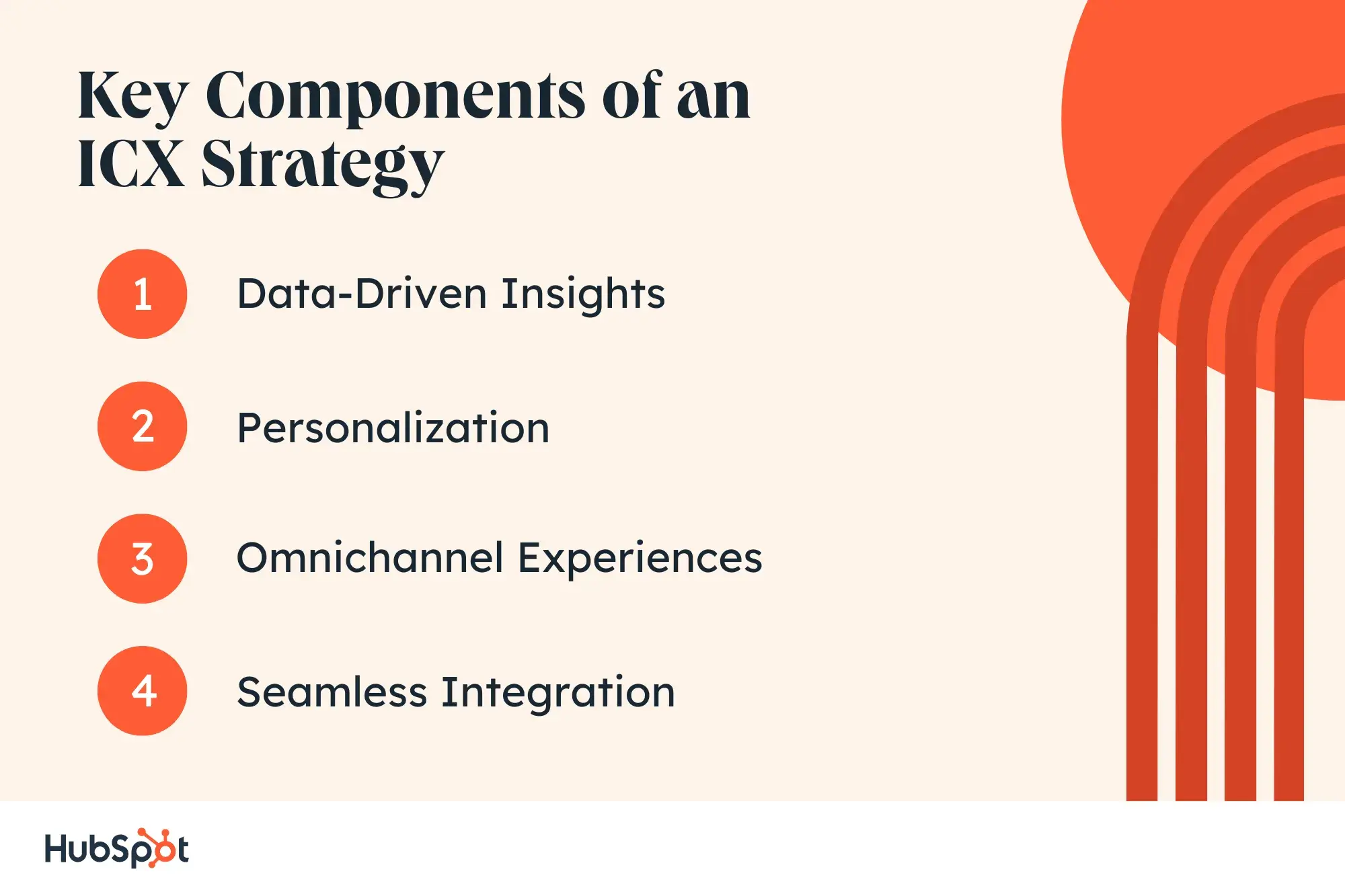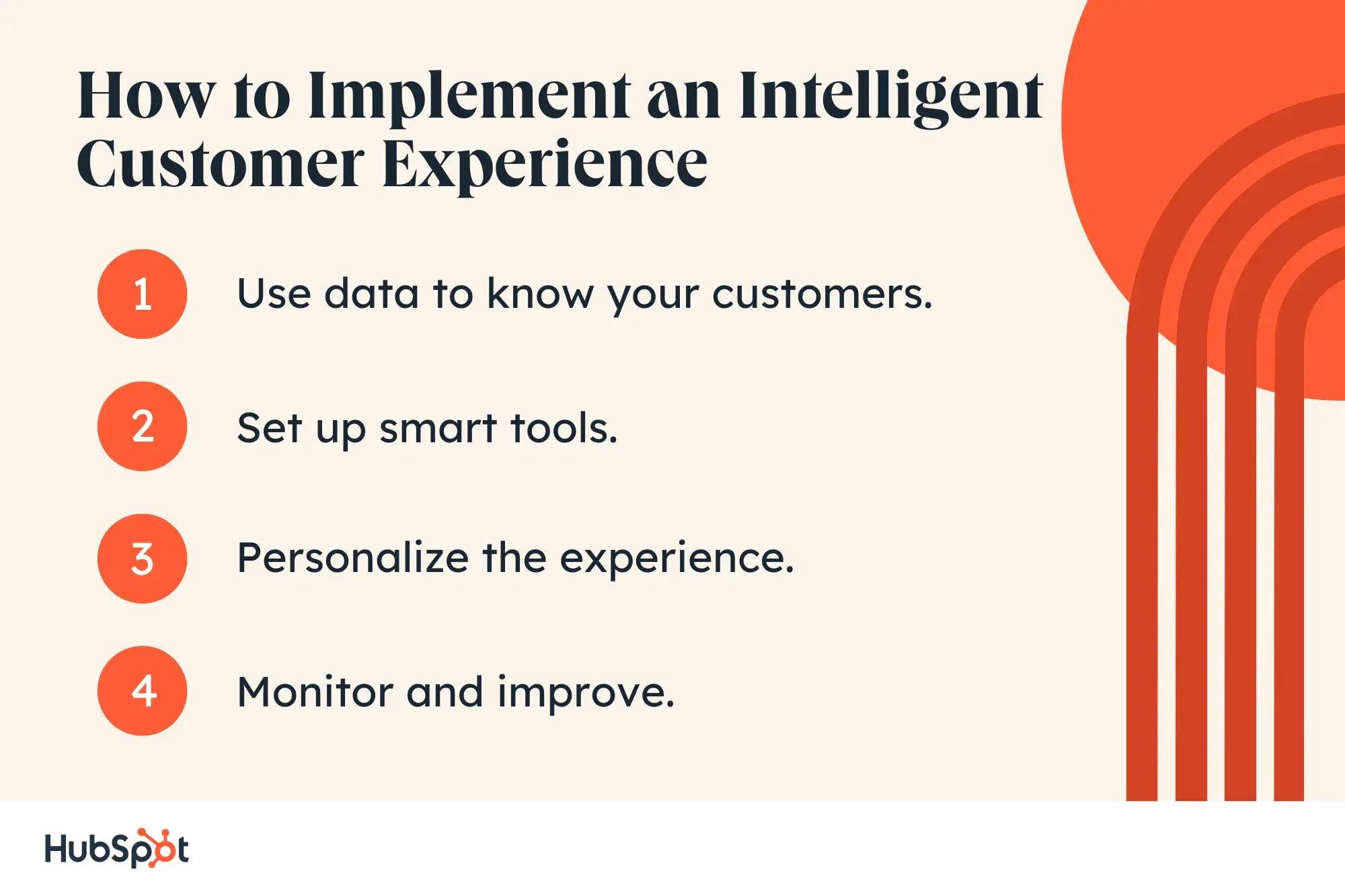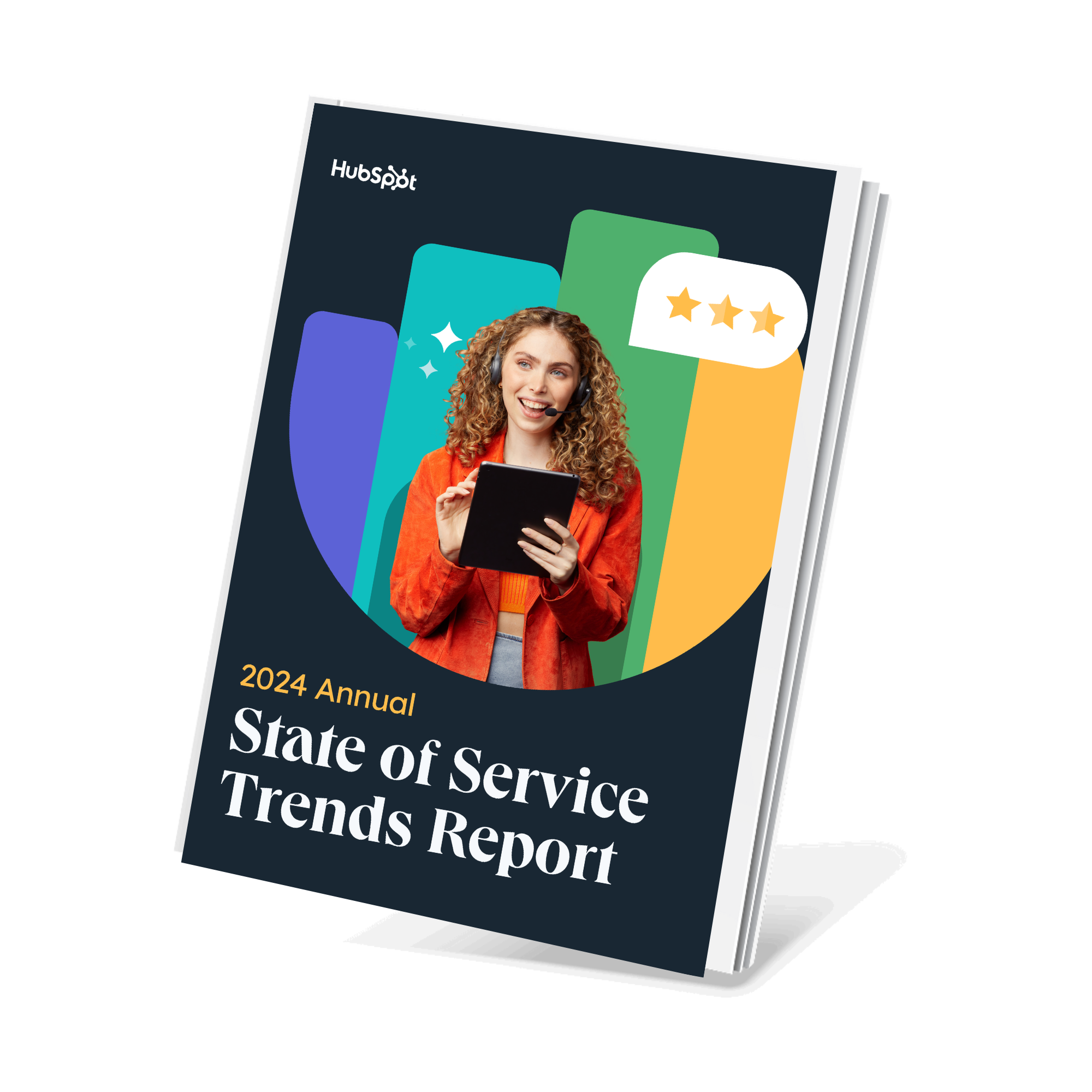Table of Contents
- What is intelligent customer experience?
- ICX vs. CX
- The Importance of Intelligent CX in 2024
- Key Components of an ICX Strategy
- How to Implement an Intelligent Customer Experience
- ICX as the Only Way to Meet Customer Expectations
What is intelligent customer experience?
Intelligent customer experience (ICX) is about making customer interactions more personal by using smart technology such as machine learning, artificial intelligence, and data analysis.
To better illustrate it, let’s imagine you run an online store. You could use AI to analyze your customer data, including past purchases and browsing data, and predict what products they might like. The next time they visit your store, they can see personalized product recommendations. If they have a question, an AI chatbot could provide answers instantly.
ICX vs. CX
Customer experience is a broad term – it refers to the overall ‘feel’ and impression a client has from all their interactions with your brand.
You can think of it as an informal scoring system, where points are either awarded or deducted every time your and your clients’ paths intersect. This covers situations like how they’ve engaged with your website, how they’ve used your product and services, and what their conversations with your support team were like.
So, what exactly do you score points for? Here are the factors:
- Ease of use, i.e., how simple and intuitive using your product or services is
- Consistent experience across all of your channels and touchpoints
- Personalization, i.e., adjusting your communication based on customer preferences and your mutual history
- Quick and high-quality support, if they ever need help or have a question for your support team.
Where and how does intelligent customer experience (ICX) fall into this?
The “intelligent” part means you’re using technologies to dynamically analyze and improve your CX strategy for each client individually. So, ICX is a means (i.e., use of technology) of offering great customer experiences — it’s not a strategy that contradicts traditional CX.
ICX uses artificial intelligence to help you analyze customer data, predict their behavior, and provide personalized recommendations. It lets you automate routine interactions through automated emails or chatbots, allowing your team to redirect their attention to more demanding tasks.
The Importance of Intelligent CX in 2024

Faster Improvement Opportunities
In the olden days, if you wanted to spot recurring customer behavior or sentiment, you’d have to spend hours watching website recordings or perusing your conversations. That’s what I did whenever I wanted to understand how customers interacted with an interface or a website I’ve written copy for.
Nowadays, ICX can give you a helping hand. You can spot issues before they grow into actual customer problems.
Courtney Zalesak, CEO at Home Service Amplifier, has seen first-hand how AI can analyze each user interaction to improve CX. She says that her company has used it to increase the customer lifetime value by over 50% for her agency’s clients in the last two years.
“For example, one HVAC company struggled with low retention and poor reviews. We implemented a ‘smart survey’ using predictive analytics to identify dissatisfied customers early,” Zalesak told me. “The company then reached out proactively, resolving issues before they escalated.”
From this action alone, the business saw a 28% decrease in cancellations and a 15-point increase in online ratings.
Offers Good Experiences at Scale
Intelligent CX lets you ‘supercharge’ your teams, without sacrificing that humane, brand feel that helps build relationships with clients.
“Traditionally, to do that, brands would have to scale by hiring more agents. Then they tried to use ineffective and frustrating chatbots,” says Larry Barker, Senior Customer Experience & Operations Manager at Teamshares.
Now that AI has become so prolific, companies can finally start seeing tangible results from automating parts of the customer’s experience. Barker says that companies that will use ICX methods while still leaning on human agents for complex issues, moments of frustration, and to create human connection are those who’ll come out ahead.
Josh Cremer, founder at Redfox Visual, agrees that the “scaling” factor is equally strong for both reactive and proactive measures.
“Customers expect highly personalized interactions and to feel understood and cared for. At Redfox Visual, we use marketing automation and predictive analytics to craft custom messages for each stage of the customer journey,” Cremer says.
He also mentions a potential blocker that unjustly keeps some businesses from using intelligent CX: a high perceived complexity and cost.
“Tools and skills to implement it are more accessible than ever, and the ROI is enormous — not just in revenue and loyalty, but also in operational efficiency,” he underlines. “The companies that recognize this earliest will have a key competitive advantage.”
Turns Data into Meaningful Interactions
Intelligent CX is the future of business because it allows you to turn data into personal, meaningful interactions. Scott Cohen, CEO at InboxArmy, says his team has harnessed AI to anticipate customer needs and tailor their communications in real time.
Such an approach allowed the brand to transform bland, generic emails into messages that feel personal and relevant, almost like a friend reaching out. When customers feel truly understood and valued, their loyalty grows, and it's evident from the analysis InboxArmy constantly performs.
“I've watched our engagement rates soar because of this shift from reactive to proactive customer service. Intelligent CX is a revolution, not just an improvement. Our ability to engage with our audience is being enhanced by this combination of true empathy and smart data use, which is transforming ordinary interactions into unique ones,” adds Cohen.
Focuses on What Matters Most
AI allows companies to stay human. How so? By handling routine, time-consuming tasks and letting customer success teams focus on meaningful client interactions. David Sides, director of operations at FHV Legal, says, “We can focus on providing emotional support and truly listening to our clients' stories.”
By using Intelligent CX, FHV can work more efficiently, potentially resolving cases faster and securing better compensation for those they represent.
“It‘s not just about technology — it’s about using these tools to provide more caring, responsive legal services. This approach helps us fight more effectively for our clients through the court system,” says Sides.
Key Components of an ICX Strategy

Data-Driven Insights
If I were to pick one element that is the backbone of every IXC strategy, it would be data. By collecting and analyzing information, businesses can understand customer preferences and behaviors.
Based on these insights, they can check what causes clients to churn, how they interact with the brand, what they like and dislike about the product or service, etc. Thanks to these findings, companies can better respond to customer needs and turn their experiences into more pleasant ones.
It’s worth mentioning that as businesses collect an increasing volume of data, they should make sure it stays safe.
Personalization
Personalization is no longer a “nice to have.” It’s a matter of survival.
McKinsey says that 71% of consumers want businesses to offer personalized experiences, and as many as 76% are upset if these expectations aren’t met. Only by diving into data can businesses provide a level of personalization that goes beyond including someone’s name in an email. By collecting information, companies can:
- Offer product recommendations.
- Organize targeted promotional campaigns.
- Adjust their communication channels.
- Provide customized content, including websites, newsletters, etc.
Personalization gives brands an opportunity to build long-lasting relationships with customers. It’s a way of showing their appreciation. According to HubSpot’s research, 66% of customer support specialists say that AI and automation tools help them offer more personalized customer experience.
Omnichannel Experiences
You need to let your customers interact with the brand however they want — some will prefer an email, or a chatbot, while others a good old phone. I personally hate phone calls and will always pick a live chat. But these days an omnichannel experience goes beyond offering multiple communication channels; it’s also about integration.
If a customer starts chatting with a support agent on social media, but then decides to switch to a phone, they should be able to do so without explaining their issues all over again. A true omnichannel experience allows for channel switching without losing context.
Seamless Integration
Intelligent CX is impossible if you can’t connect and exchange information across your tools.
Take a situation like a technical glitch in your customer checkout flow. If a client reaches out to report the problem via chat, your chatbot can provide a quick reply that you’ll look into the issue and get back to them ASAP. It could also:
- Decide, depending on its settings, whether to redirect the issue to a human agent
- Automatically create a ticket and assign it to the relevant team
- Respond to them in whichever channel they’re currently available
- Offer a discount code once the issue has been fixed for any inconvenience.
All this is possible with customer service software like Service Hub. And while the above was just a hypothetical scenario, the numbers you can get by using the right tools for ICX aren’t.
Service Hub lets your company reach up to 13x faster resolution times and, as a result, an 84% CSAT increase as compared to using siloed customer management tools.
How to Implement an Intelligent Customer Experience

Use data to know your customers.
Start off by gathering all the information you have about your customers. Take note of the features like how they use your website and what your product helps them achieve.
Your end goal here is to break your customer base into very specific segments. To do this, you’ll need to look into aspects like demographics (or firmographics if you’re in B2B), purchasing history, on-site behavior, customer survey scores, past conversations, etc.
For example, say you notice that a customer frequently visits a specific product category, like Japanese photography albums.
If your data tells you that they’ve responded to discount codes well in the past, you could email them a special code for items in the category. Or, if they aren’t a fan of promotions but like to shop for new releases, you could customize your newsletter to bring those forward in your emails.
As you can see from this example, you can be flexible with your tactics and customer behavior predictions.
Set up smart tools.
I’ve mentioned earlier that ICX is all about data, and you cannot collect it without the right tools (duh!). On top of deploying a chatbot on your website to answer customer/prospect’s queries, here are other tools you can consider:
- Website analytics: Google Analytics, Livesession, Mixpanel, etc.
- Customer Relationship Management (CRM): HubSpot, Pipedrive
- Feedback tools: survey platforms like Typeform, review sites like G2Crowd, and feedback forms like Google forms
- Social Media Analytics: Facebook, Instagram, Twitter, LinkedIn – whichever you use
- Email Marketing Platforms: HubSpot, Mailchimp, SendGrid.
There are plenty of options to choose from. These are only a few examples. The most important thing is to pick software from each category to make sure you’ve got all the data you need.
Don’t know where to start? Give HubSpot’s Free customer experience tools a try.
Personalize the experience.
Part of effective ICX is personalization. And given how much data you can collect, personalizing the customer experience shouldn’t be that hard. You just have to segment your customers correctly.
Let’s imagine you run a SaaS company. If you collect data like usage patterns, subscription data, customer feedback, and engagement data, you could split your customers into the following segments:
- New users
- Power users
- Churn risk
- Engaged, but low usage.
Based on these segments, you could adjust your tactics to make their experience more personalized. For example, with new users, you could create a detailed onboarding email sequence. For power users, you can offer a loyalty program. For those at risk of churning, you can offer limited discounts. You get the point.
Monitor and improve.
You need to revisit and, if necessary, update your ICX tactics regularly. Look at how the user flows you’ve built are performing. For example, if you notice that certain topics that are now handled fully by AI don’t have a high success rate, then consider how you could improve it.
Sometimes, it’ll come down solely to giving your AI better data. Other times, you’ll see that the problem relates to something broader, like a problem with the website’s usability.
Remember that you’re building AI-powered solutions to serve your customers better. And no one will understand clients’ needs more accurately than humans, which is why your staff should always be kept in the loop.
ICX as the Only Way to Meet Customer Expectations
I know that everyone keeps talking about cut-throat competition, limited marketing budgets, and the constant pressure to innovate fast.
All of this makes acquiring new customers harder than ever before. But that’s why we all should put even more effort into making sure that our current clients are happy. And one of the ways to do so is by investing in intelligent customer experience solutions.
This not only allows you to put your data to good use by personalizing the client experience. It also lets your human CS agents focus on what matters the most: building meaningful relationships with clients.
Customer Experience






![Is The Customer Always Right? [What It Means + Why It Matters]](https://53.fs1.hubspotusercontent-na1.net/hubfs/53/customer-is-always-right-origin-1-20250202-6448090.webp)





